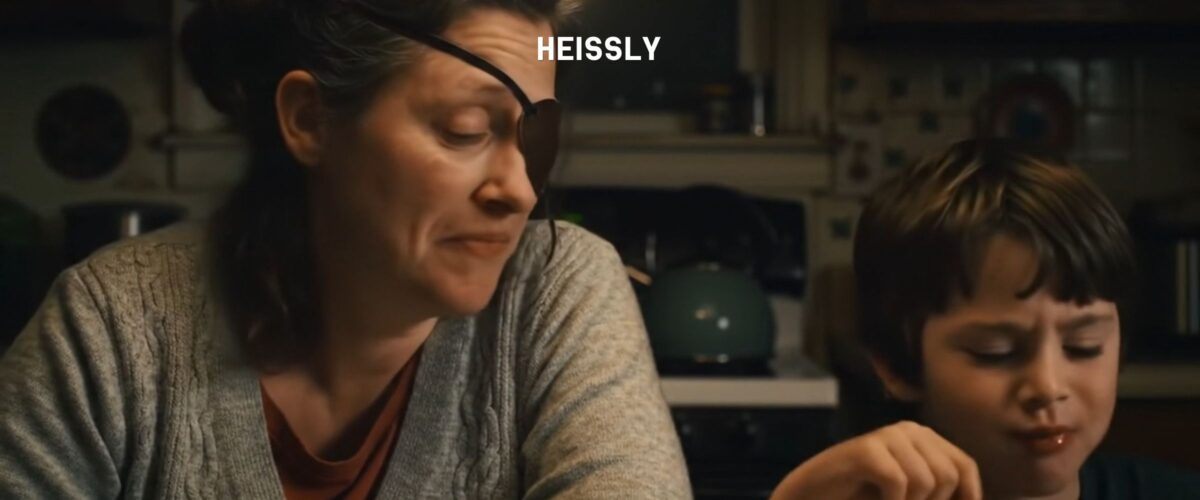The Mother with One Eye: A Story of Sacrifice, Shame, and Unconditional Love
Every culture holds stories that transcend borders, reminding us of the unspoken sacrifices of parents. Among them is the poignant tale often known as “The Mother with One Eye.” Its origins are debated—some trace it to Korean folklore, while others see it as a modern parable—but its impact is universal. At its core, it tells the story of a child ashamed of his mother, only to realize, too late, the depth of her love.
The Story Retold
Once upon a time, there was a young boy who lived with his mother. She had only one eye. Every time she appeared in front of his classmates, he felt humiliated. Her missing eye drew whispers, stares, and cruel laughter from others. Instead of protecting her, the boy turned his shame into anger. “Why can’t you just be normal?” he would ask.
As he grew, his embarrassment hardened into resentment. He dreamed of escaping his small neighborhood and building a new life where no one would ever know about her. When he finally became an adult, he left home. He studied, worked, married, and built a family of his own—without looking back.
Years later, his mother appeared at his door. By then, he had everything he thought he wanted: a wife, children, and a comfortable home. But when his little ones saw their grandmother with her single eye, they recoiled. He felt the same shame return, sharper than ever. Instead of welcoming her, he shouted at her, told her never to return, and closed the door.
Time passed. One day, the man was called back to his old neighborhood after hearing of his mother’s death. When he entered the small house where he had once lived, he found a letter. In it, his mother explained:
“When you were a child, you lost an eye in an accident. I could not bear to see you suffer. I gave you one of mine. I never wanted you to feel incomplete, so I lived my life with only one eye. I was proud to see the world through you.”
The man collapsed in tears. All his life, he had run from the very woman who had given him the gift of wholeness. But it was too late—her sacrifice had been invisible until she was gone.
A Universal Message
The story strikes so deeply because it speaks to a truth many of us experience but rarely admit: children often do not understand the depth of a parent’s sacrifices until they are older—or until the parent is no longer there.
Shame is a powerful emotion, especially in adolescence. The boy in the story is not inherently cruel; he is overwhelmed by the social pressure to “fit in.” A mother with one eye becomes a symbol of his difference, and instead of embracing it, he rejects it. His reaction is tragically human.
Yet the mother’s response is more than human—it is almost divine. She never blames him, never explains, never demands recognition. Her love is silent, sacrificial, and unconditional.
Why This Story Endures
Even though it may not come from a single ancient tradition, “The Mother with One Eye” has been retold countless times across blogs, classrooms, and motivational speeches. Its endurance lies in its emotional punch: the twist ending reshapes everything we thought we knew about the characters.
-
For children, it is a warning not to take parents for granted.
-
For parents, it is both heartbreaking and affirming, reflecting the sacrifices they make without acknowledgment.
-
For society, it raises questions about beauty, disability, and the cruelty of shame.
Reflection on Sacrifice
The mother’s choice to give her eye is extreme, but it symbolizes the countless invisible sacrifices parents make daily. How many times have mothers skipped meals so their children could eat? How many fathers have worked through pain to pay for education? How many parents hide their suffering so their children can feel safe?
We rarely see these sacrifices until later, when we carry responsibilities ourselves. In this sense, the story becomes a mirror: it asks us to reflect on what has been given to us, often without our knowledge.
The Modern Relevance
In today’s culture, where appearance and social acceptance dominate much of childhood and adolescence, the boy’s shame feels especially relevant. Social media amplifies this pressure; young people are hyperaware of difference. But the story challenges us to reconsider what really matters.
In a world obsessed with image, the mother’s missing eye becomes a symbol of authenticity, sacrifice, and love. Her “flaw” is, in fact, her greatest gift.
Lessons Learned
The moral is simple yet profound: love often hides behind imperfection. What we reject in shame may be the very thing that saved us.
We cannot change the boy’s story—he learns the truth only after it is too late. But we can change our own. We can choose gratitude while those we love are still here. We can ask uncomfortable questions, listen deeply, and honor the sacrifices made for us.
As readers, we are left with a choice: will we, like the boy, live in shame and regret, or will we recognize the love that has shaped us, even when it is imperfect?
Conclusion
The Mother with One Eye is more than a sad tale; it is a timeless reminder. Parents may not always be perfect, and their love may not always look beautiful, but it is fierce, sacrificial, and unconditional. We are who we are because someone gave us a part of themselves—sometimes literally, sometimes invisibly.
The story challenges us to pause, to reflect, and to say the words that too often go unsaid until it is too late: Thank you. I see you. I love you.
